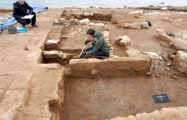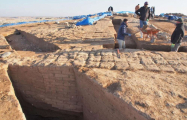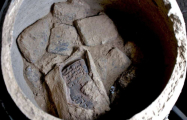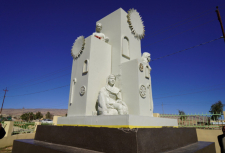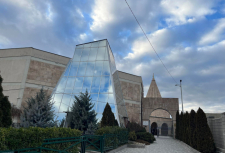The ancient city of the Mittani Empire on the territory of Iraqi Kurdistan
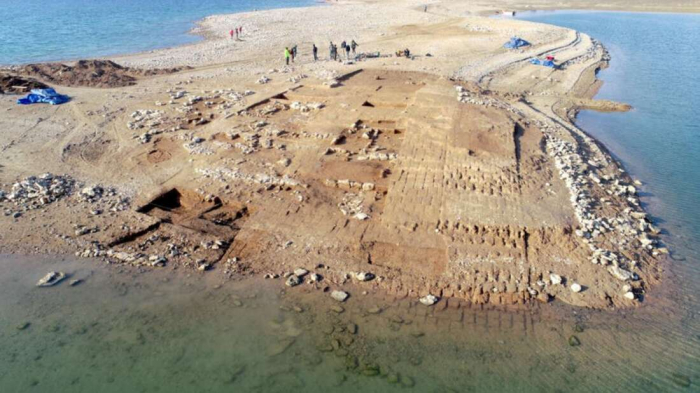
Bekes Birifkani, director of the Department of Historical Artifacts and Culture of Duhok Province, told reporters that an ancient 3,400-year-old city has been found in the Semel district of Duhok Province.
Birifkani noted that the area was inhabited until 1985, before the Mosul dam was built in 1990, which left the area under water. Noting that to date, more than 2,000 historical monuments have been discovered in the city, the excavations of which this year have also yielded important results.
"Despite the thousands of years that have passed, the walls of the found city and structures several meters high have not been destroyed," Bekes Birifkani said.
Hassan Ahmed, head of the Agency for the Protection of Cultural Heritage of the Northern Kurdistan Regional Government (KRG), said that they have intensified their work since the beginning of the year due to the decline of water in the Tigris River.
"We are conducting excavations here with the help of the Tubingen and Freiburg Universities of Germany. The remains of many buildings from the period of the Mittani Empire are preserved in this ancient city. The ancient city we found is called Zahiku. Despite thousands of years, its walls and structures several meters high have not been destroyed," he said.
Three years ago, a drought lowered the height of the Mosul reservoir in Iraqi Kurdistan and briefly exposed the city, which, according to archaeologists, may be Zahiku, the center of the Bronze Age Mittani empire. Now the arid conditions have returned, posing a serious threat to the people of Iraq, but benefiting archaeologists by giving them a second chance to explore this important site.
The drought in southern Iraq was less noticeable worldwide than the heat wave in India and Pakistan, but it was strong enough to cause the discharge of a large amount of water accumulated upstream in the Mosul reservoir. The likelihood that Mosul will dry up before the drought ends is terrifying, but in the meantime, the water level has dropped so much that ancient treasures are being discovered.
During the previous decrease in the reservoir level, a team of archaeologists discovered a large palace, on the walls of which frescoes have been preserved. The palace was used in at least two periods, one of which was about 3,400 years ago, and was located 20 meters (66 feet) from the eastern bank of the Tigris River. It was clearly the center of power of the Bronze Age, and historians suspected that it was the city of Zahiku, mentioned in sources 3800 years ago.
Tags: #yazidisinfo #iraqyazidis #newsyazidis
The ancient city of the Mittani Empire on the territory of Iraqi Kurdistan

Bekes Birifkani, director of the Department of Historical Artifacts and Culture of Duhok Province, told reporters that an ancient 3,400-year-old city has been found in the Semel district of Duhok Province.
Birifkani noted that the area was inhabited until 1985, before the Mosul dam was built in 1990, which left the area under water. Noting that to date, more than 2,000 historical monuments have been discovered in the city, the excavations of which this year have also yielded important results.
"Despite the thousands of years that have passed, the walls of the found city and structures several meters high have not been destroyed," Bekes Birifkani said.
Hassan Ahmed, head of the Agency for the Protection of Cultural Heritage of the Northern Kurdistan Regional Government (KRG), said that they have intensified their work since the beginning of the year due to the decline of water in the Tigris River.
"We are conducting excavations here with the help of the Tubingen and Freiburg Universities of Germany. The remains of many buildings from the period of the Mittani Empire are preserved in this ancient city. The ancient city we found is called Zahiku. Despite thousands of years, its walls and structures several meters high have not been destroyed," he said.
Three years ago, a drought lowered the height of the Mosul reservoir in Iraqi Kurdistan and briefly exposed the city, which, according to archaeologists, may be Zahiku, the center of the Bronze Age Mittani empire. Now the arid conditions have returned, posing a serious threat to the people of Iraq, but benefiting archaeologists by giving them a second chance to explore this important site.
The drought in southern Iraq was less noticeable worldwide than the heat wave in India and Pakistan, but it was strong enough to cause the discharge of a large amount of water accumulated upstream in the Mosul reservoir. The likelihood that Mosul will dry up before the drought ends is terrifying, but in the meantime, the water level has dropped so much that ancient treasures are being discovered.
During the previous decrease in the reservoir level, a team of archaeologists discovered a large palace, on the walls of which frescoes have been preserved. The palace was used in at least two periods, one of which was about 3,400 years ago, and was located 20 meters (66 feet) from the eastern bank of the Tigris River. It was clearly the center of power of the Bronze Age, and historians suspected that it was the city of Zahiku, mentioned in sources 3800 years ago.
Tags: #yazidisinfo #iraqyazidis #newsyazidis
